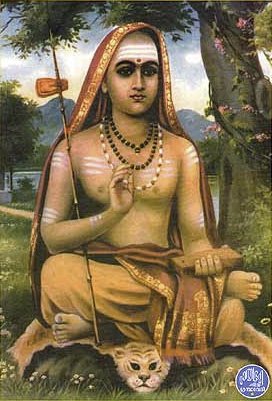Katha Upanishad with Shankara’s Commentary
by S. Sitarama Sastri | 1928 | 23,822 words
The Katha Upanishad is a collection of philosophical poems representing a conversation between the sage Naciketas and Yama (god of death). They discuss the nature of Atman, Brahman and Moksha (liberation). The book is made up of six sections (Valli). This commentary by Shankara focuses on ‘Advaita Vedanta’, or non-dualism: one of the classical ort...
Verse 2.3.4
इह चेदशकद्बोद्धुं प्राक्शरीरस्य विस्रसः ।
ततः सर्गेषु लोकेषु शरीरत्वाय कल्पते ॥ ४ ॥iha cedaśakadboddhuṃ prākśarīrasya visrasaḥ |
tataḥ sargeṣu lokeṣu śarīratvāya kalpate || 4 ||4. If here he is able to know before the falling of the body, then in the worlds of created things, he becomes embodied.
Shankara’s Commentary:
Com.—If he is able to know and knows even during life, this Brahman} the cause of fear, before the falling of the body, then he becomes freed from the bond of Samsara. If he is not able to know, then, i.e., from want of that knowledge, he becomes able to take, i.e., he takes a body in earth and other worlds, where those who are fit to be created, are created. Therefore, before the falling of the body, attempt should be made to realise the atman; for the realisation of the atman even here will be clearly horrible as that of a face reflected in a mirror; not in other worlds except the Brahmaloka; and that is hard to reach.
